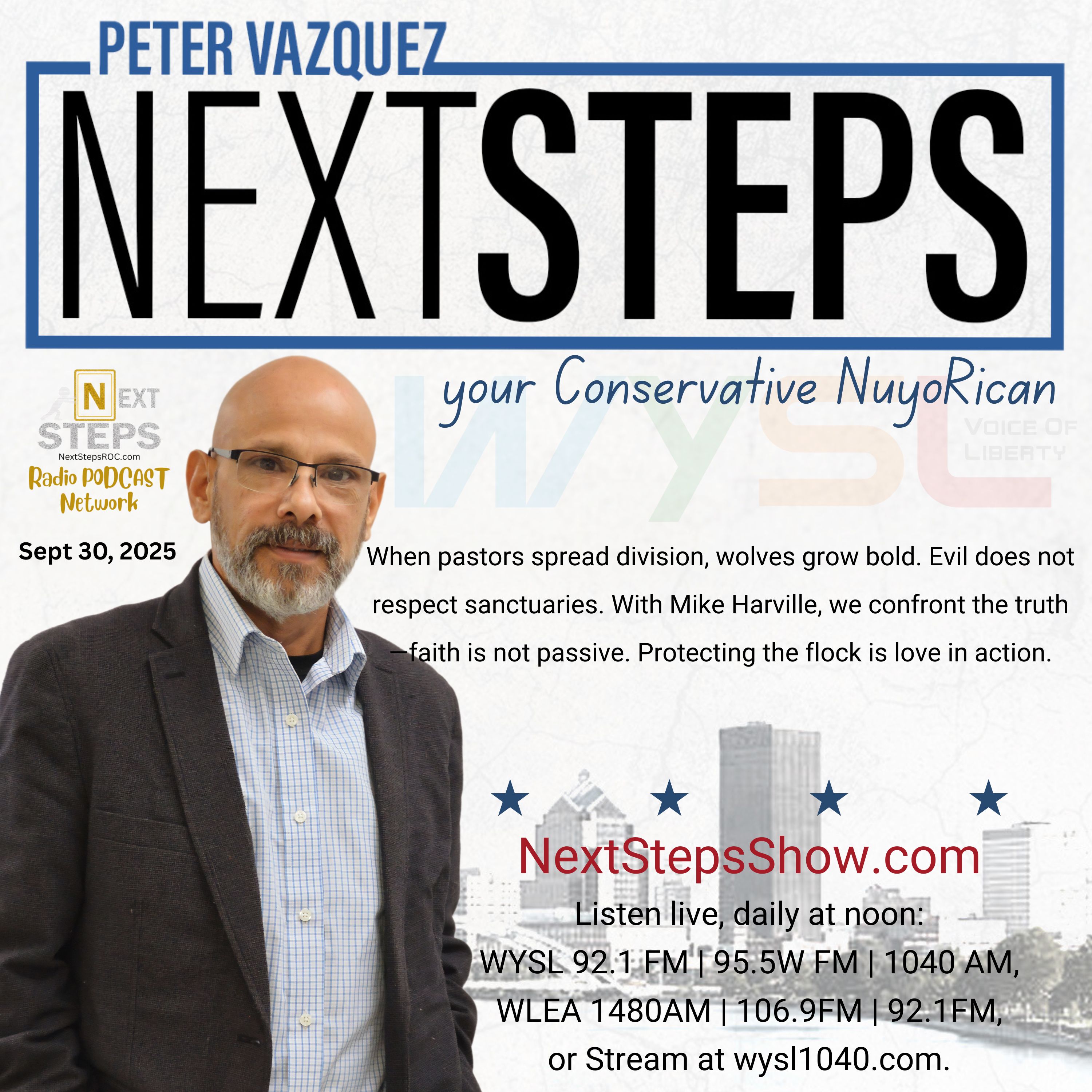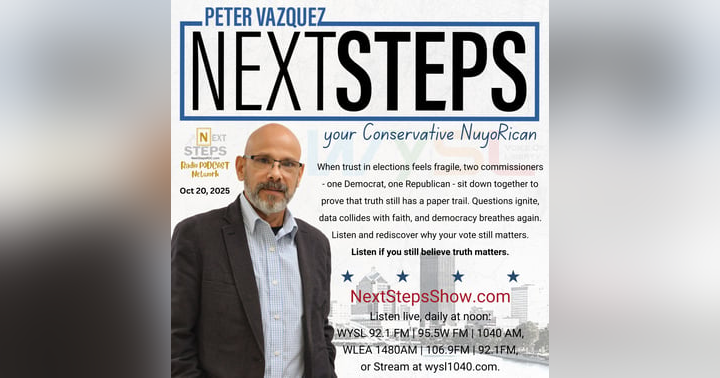
Defending God’s House. The unthinkable has become ordinary. Church doors once open to the lost now double as targets for the hateful. When a pastor’s viral meme mocked Christ Himself, it was more than bad theology—it was a symptom of a society that has forgotten reverence. Evil is no longer at the gates—it is sitting in the pews. The question for every believer is no longer if danger will come, but whether we are ready when it does.
The image showed two versions of Jesus: one brown-skinned, carrying bread and fish; the other white, wearing a red “47” cap, rifle slung over his shoulder, clutching a Ku Klux Klan hood. Beneath it were the words, “The choice is yours. Which one do you follow?” It was not posted by an activist or provocateur—but by a pastor, a man called to shepherd souls. That act alone spoke volumes about the state of the Church and the confusion gripping our nation.
A leader of souls should heal, not divide. Yet in today’s culture, division has become currency. The Gospel’s call to unity has been replaced by political signaling, moral theater, and fear of offense. Evil thrives in that chaos. It distorts truth, manipulates imagery, and pits believer against believer.
This isn’t simply a battle of politics or ideology—it is a spiritual conflict playing out in the public square. As C.S. Lewis warned in The Screwtape Letters, “The safest road to hell is the gradual one—the gentle slope, soft underfoot, without sudden turnings.” The Church’s gentle slope today is compromise: a reluctance to confront sin, to defend righteousness, or even to secure its own walls.
That is why I spoke with Mike Harvill, Security Director at Kensington Church, Co-Founder of the Security Leaders Coalition, and Board Member of the Faith-Based Security Network (FBSN). Harvill is not a man of panic, nor a partisan crusader. He is a man of faith who believes that prayer and protection are two halves of the same obedience.
Harvill has spent over a decade helping churches prepare for the unthinkable. He began in corporate security before realizing that America’s churches were dangerously unprepared for violence. “Law enforcement usually arrives after the bang,” he told me. “Churches must be ready, willing, and able before it ever happens.”
Between 2000 and 2024, there were 379 violent incidents in U.S. houses of worship, resulting in 487 deaths. Nearly 70 percent involved firearms. In 2023, hostility against churches reached an all-time high—436 documented hostile acts, more than double the year before, according to the Family Research Council.
The pattern is clear: spiritual indifference breeds vulnerability.
The attack in Grand Blanc Township, Michigan, on September 28, 2025, is a tragic example. A man, motivated by anti-religious hatred, crashed his truck into a Mormon church, opened fire, and set the sanctuary ablaze. Four were killed, eight wounded. In seconds, a place of worship became a war zone.
“When sanctuaries become battlegrounds,” Harvill said, “it’s time to stop pretending and start preparing.” Preparation, however, does not mean fear. “Turning the other cheek isn’t about ignoring evil,” Harvill explained. “It’s about refusing revenge. But when someone walks into your sanctuary to hurt your people, you have a duty to stop them.”
Faith without readiness is sentimentality. Scripture teaches action: David didn’t wait for God to strike down Goliath—he picked up a sling and acted. Jesus told His disciples to buy swords, not to promote aggression but to prepare for reality. The world is fallen. Evil is real. Faith that fails to act is no faith at all.
Yet too many pastors shrink from this responsibility. They fear that visible security will alienate congregants. But Harvill’s experience says otherwise: “People thank our team every week,” he said. “Seeing someone standing watch reassures them—it says their safety matters.”
Lifeway Research reports that one in four American churches has faced a security threat or disruption, yet fewer than half have a plan. Those numbers expose not just a policy gap—but a theological one. Somewhere along the way, the Church forgot that watchfulness is a biblical command.
In Ezekiel 33, God tells the prophet, “Son of man, I have made you a watchman… When you hear the sound of the trumpet, give them warning from Me.” Watchmen aren’t worriers—they’re guardians. The tragedy is not that churches face threats; it’s that so many refuse to hear the trumpet.
Harvill’s framework is simple: Be ready. Be willing. Be able.
Readiness means training—knowing your environment, your people, and your vulnerabilities. It means spiritual grounding for those who serve. Willingness means moral clarity—the resolve to act, not out of fear but out of love. And ability means competence—the physical, mental, and logistical preparation to respond effectively.
This is not a call to militarize the church—it’s a call to shepherd leadership. In every era, the faithful have defended the sacred. Nehemiah rebuilt the walls of Jerusalem with a sword in one hand and a trowel in the other. Jesus Himself drove moneychangers from the Temple with a whip. The Church must once again see protection as part of its witness.
Practical measures are not hard to implement. Conduct a safety audit. Walk the property, inspect entrances, parking lots, and children’s areas. Train ushers and greeters to recognize warning signs. Develop relationships with local law enforcement. Invest in cameras, access control systems, communication tools, and basic emergency training.
And take advantage of resources. The federal Nonprofit Security Grant Program allocates more than $200 million annually for training, alarm systems, and facility upgrades for houses of worship. Organizations like the Faith-Based Security Network offer professional-grade instruction for less than the cost of a conference ticket. The tools are there—the will is what’s missing.
Beyond the physical threat lies something deeper: a culture that despises truth and mocks faith. The Church today stands at a crossroads much like Rome’s early Christians—facing not lions in an arena, but ridicule in the media, hostility in classrooms, and intimidation in politics. Yet persecution has always refined the faithful. As Harvill reminded me, “God works through His people. He could stop evil on His own, but He calls us to act—to be His hands, His eyes, His watchmen.”
In a world that celebrates sin and punishes conviction, standing ready is itself an act of worship. Faith-based security isn’t about paranoia—it’s about obedience. It’s about loving your neighbor enough to guard their life as you would your own.
Evil does not respect sanctuaries. It never has. But the faithful can ensure sanctuaries still stand. The shepherd’s staff has always been more than a symbol of comfort—it is a weapon against wolves.
The Church must once again become both sanctuary and stronghold—a refuge of grace, but also a fortress of conviction. To do any less is to betray the trust God placed in His people.
If you lead a congregation, do not wait for tragedy to teach this lesson. Build your plan. Train your people. Equip your volunteers. Partner with those who can help. Faith without preparation is presumption.
Protecting the flock is not fear—it is love in its highest form, stewardship in practice, and obedience to God’s command.
Be ready. Be willing. Be able.
And may God bless those who guard His house.



